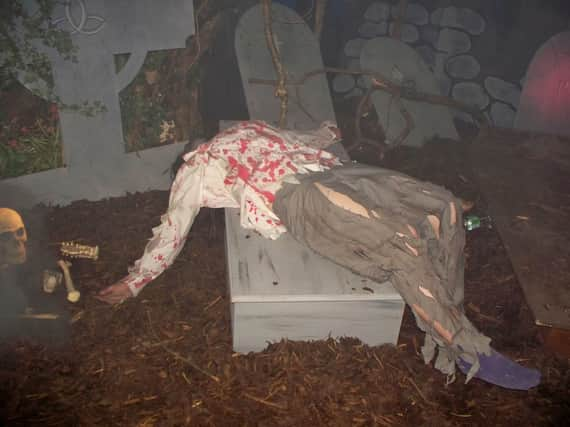A scare at bedtime: Stumpy still roams the braes of Craighadoes


The gruesome legend of Stumpy’s Brae was occasionally called the Legend of Tom the Toiler. Tom was allegedly murdered with a pick by an old couple for his belongings.
They tried to put him in his pack after emptying it of the goods but he was too tall. So they cut off his legs at the knee to bury him. Legend says he was buried among the roots of a tree.
Advertisement
Hide AdAdvertisement
Hide AdTom came back for vengeance as a gruesome ghost that walked about on the stumps of his legs and tormented his killers to their dying day.
Tradition varies as to where Stumpy was interred. The story says they carried the body to a Brae and that there was a bridge over a burn between their house and where they put him.
Some say then that the burial was in Craighadoes on a small brae between what used to be Joshua Galbraith’s farm house and the road.
The legend tells us that the ghost came over the bridge and there is bridge between where Stumpy was buried in Craighadoes and Stumpy’s Brae.
Advertisement
Hide AdAdvertisement
Hide AdThe steep brae between Craighadoes and Lifford which is now Stumpy’s Brae is where Stumpy was murdered.
Mrs Cecil Frances Alexander the author of Once in Royal David’s City and All Things Bright and Beautiful and There is a Green Hill Far Away wrote the legend in poetry form.
The poem tells us where the house in which the murder took place is supporting the legend that it was an old house at the foot of what is now called Stumpy’s Brae. The house was demolished in recent years.
Mrs Alexander, wife of the Church of Ireland Bishop of Derry, was an accomplished poet and as mentioned the author of well known hymns. Yet there are indications that she was revising and editing an older poem. There can be little doubt that Mrs Alexander was not the original author of the poem and the poem was made to conserve an oral tradition.
Advertisement
Hide AdAdvertisement
Hide AdThe message of the poem that the murderer can’t escape his or her just punishment contradicts Mrs Alexander’s kindly nature and her belief in a merciful God indicating she was preserving and editing someone else’s poem.
The original author of the poem is a person who was able to see Stumpy’s Brae from near her or his home. It was a person who belonged to the St Johnston area, it looks like a person who lived in Craighadoes.
It must have been a person famed for folklore and poetry when Mrs Alexander went to the trouble of meeting the person. Possibly the person was known to the Church of Ireland rector who likely told the Bishop of Derry who then told his wife. Quite likely the original author was a member of the Church of Ireland.
Mrs Alexander had a great charity for the poor and loved to meet with them and talk to them and hear their stories. She was only 21 when she wrote Stumpy’s Brae.
Advertisement
Hide AdAdvertisement
Hide AdThe poem is written in the local dialect which carried a huge Scottish influence so the time setting is after the Plantation. It seems that we are talking about the 1600s or the 1700s.
Local tradition favours the 1700s. The house standing until recently would support this as well. The poem - too long to be reproduced here can be found on the www.stjohnstonandcarrigans.com website.